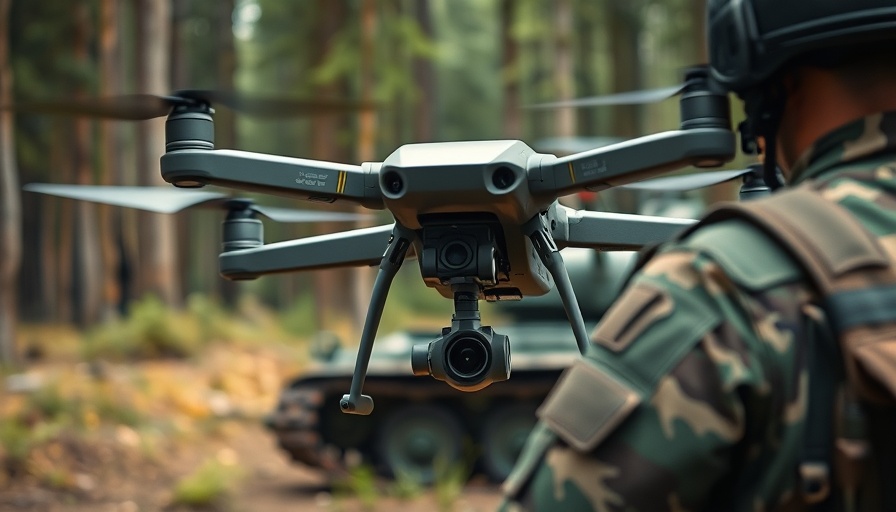
Military Drone Use: A Necessity for Modern Warfare
The UK military has been adjusting its operational strategies, particularly concerning the use of drones, which are essential tools in modern warfare. These unmanned aircraft serve various purposes, from reconnaissance to targeted attacks, improving situational awareness and troop safety. However, this technological advancement has generated significant debate, particularly regarding safety protocols and ethical implications.
Implications of Flying Drones Over Troops
Recent restrictions prevent military officials from operating drones directly over soldiers' heads during military exercises. While technology presents numerous advantages in battlefield scenarios, the prohibitive stance is rooted in safety concerns. The proximity of drones to personnel raises risks, particularly related to operational failures, collisions, or battery malfunctions, potentially leading to severe injuries or casualties. Hence, ensuring the safety and well-being of soldiers while utilizing these tools is paramount.
Historical Context: Drone Warfare Evolution
The evolution of drone use in military engagements can be traced back to the early 2000s, particularly during conflicts in Iraq and Afghanistan. Initially used for surveillance, drones have expanded capabilities to include precision strikes. As their roles have evolved, so too have regulations regarding their operation, especially concerning personnel safety. Understanding this progression helps contextualize current limitations imposed on drone usage over troops.
Differing Perspectives: Safety vs. Tactical Advantage
Opinions on drone operation protocols diverge between military strategists and frontline soldiers. Some argue that having unrestricted drone use above troops could enhance tactical effectiveness, allowing for real-time threat assessment and response. Conversely, stronger voices emphasize the importance of safety protocols, asserting that human lives must take precedence. This ongoing debate underscores the challenge of balancing operational efficiency with soldier welfare.
Looking Ahead: Regulations and Technology Development
As drone technology continues to advance rapidly, military regulations will likely adapt to integrate new capabilities safely. Experts predict developments such as collision avoidance systems, smarter navigation software, and more reliable battery technology will significantly reduce risks associated with drone operations. Such advancements promise to enhance troop safety while maintaining the tactical advantages these systems offer.
The Larger Picture: Ethics in Warfare
Beyond just military logistics, the drone debate feeds into broader conversations about ethics in warfare. The moral implications of using drones, particularly concerning civilian casualties during their deployment, have prompted calls for more stringent oversight and ethical considerations in military strategy. Discussions surrounding the deployment of drones reflect general concerns regarding diminishing accountability and the potential detachment from traditional combat ethics.
Conclusion: Balancing Innovation and Safety
The UK military's restriction on drone operations above personnel encapsulates a critical interplay between innovation and safety. As drone technology evolves, balancing operational advantages against potential risks remains a paramount concern for military leadership. Investing in safer drone technology and refining usage protocols will ensure that advancements in warfare contribute positively to both military efficacy and personnel safety. Understanding these dynamics invites broader discussions around innovation, ethics, and the future of military operations worldwide.
 Add Row
Add Row  Add
Add 



Write A Comment